The Aftermath of Performative Allyship: A Century Comparison
On empty promises to the Black soldiers that fight both for and within America—on stages, in neighborhoods, and other battlegrounds
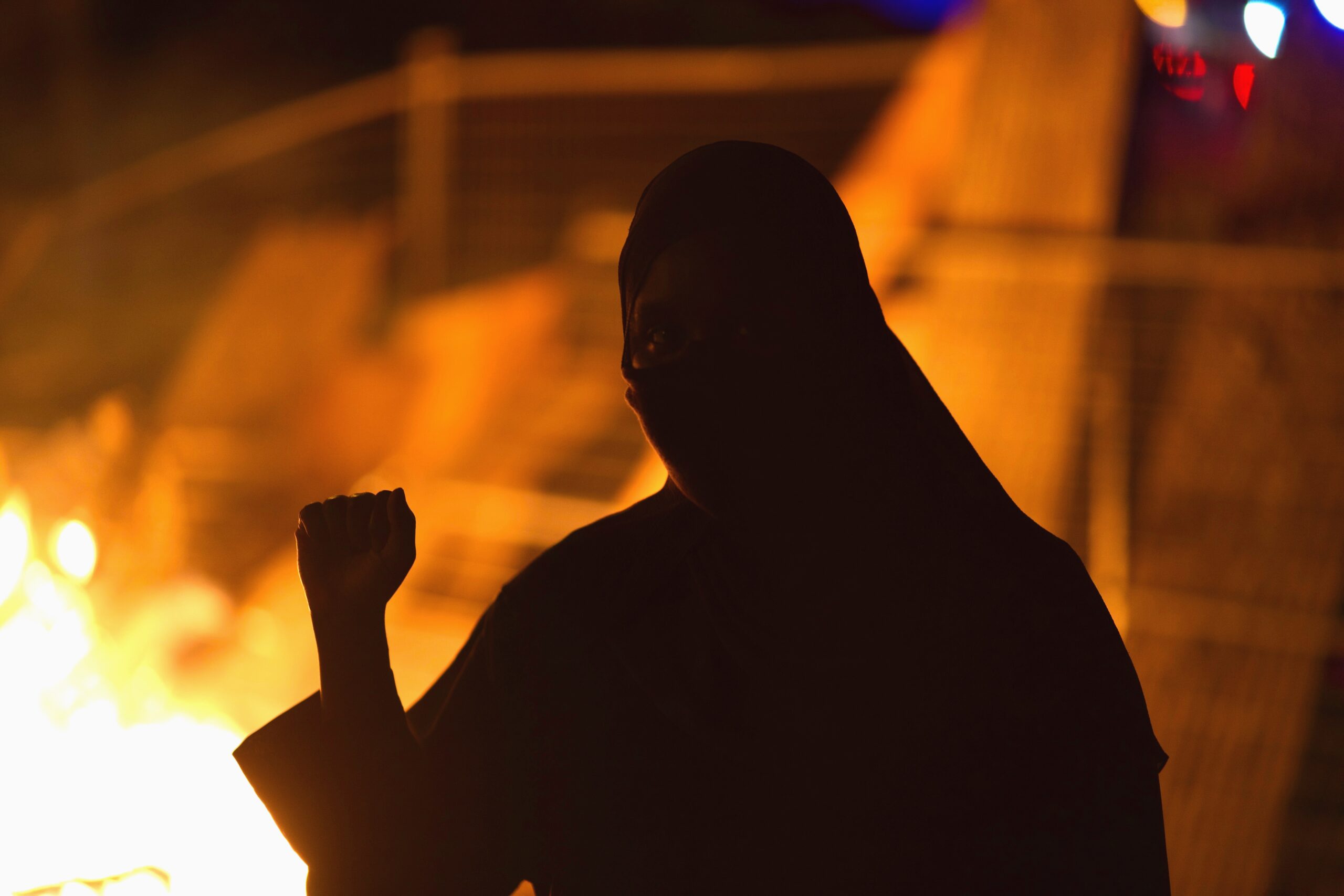
I grew up, through most of my childhood, on 65th and Zane in Brooklyn Park. While Brooklyn Park is considered a suburban neighborhood, it isn’t a stranger to a multiplicity of ethnic groups and cultures. I grew up with friends who were Ghanaian, Hmong, Mexican, Liberian, and many more nationalities. What didn’t become clear to me until I was older was the way in which my neighborhood formulated, and it seemed clear that it played as a middle ground between what is considered Northside Minneapolis and the predominantly white neighborhoods that were in Champlin, Golden Valley, and a new city called Maple Grove.
What became clear was the design of our city: the active monster that was gentrification trickled into parts of Northside Minneapolis, pushing many Black and Brown folks further north. At the same time, the newer growth of these white suburban cities was increasingly too expensive to afford for Black families, making many financially barred from living there. So where did they land? Right on streets like Zane, Regent, and Brooklyn Boulevard.
It felt as though my neighborhood was a boiling pot of structural changes mixed with an implicit sense of exclusion: a neo-covenant which could connect to some of Minnesota’s most racist history around housing and classism. But we had bigger problems than this. Police were more vigilant and crime hit our streets in ways that had never existed before. It felt as though our worlds were slowly forming into a battleground.
One day, as I was waiting for the 724 bus, I saw a Black man get off at another metro stop across the street from me. He wore an army suit as though he had just come home from deployment. He looked around his neighborhood. The look on his eyes spelled confusion. He looked to his right to see a busted window from the night before; he checked behind him to see caution tape around the Shell station from a weekend shooting, and stared across the street to some young Black boys fighting roughly in the grass. At that moment, I asked myself, “Does he accept the changes of his home? Does he feel his contribution to the war was worth fighting for?”
Years later, I found myself on the 724 again, headed back to my father’s home down 63rd. On my way, I see a shrine for a young man whose life was gone too soon: Daunte Wright. It was at this moment I reflected on my life in this neighborhood and the ways it had changed since I had last been there. It didn’t hit me until then, the image I saw of that Black man in military uniform from when I was younger. He reminded me of a character named John from Mary Burrill’s play Aftermath. He reminded me of America’s neglect to Black soldiers. But I couldn’t say it as clearly as Ralph Ellison when he wrote, “[F]or the ex-colonials, the declaration of an American identity meant the assumption of a mask.”1
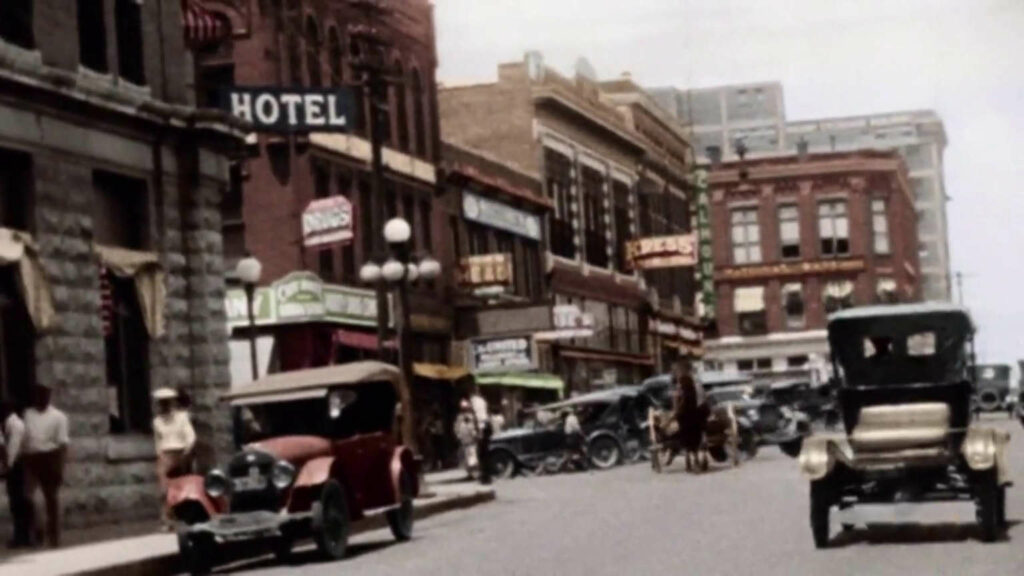
What’s important to note is that Mary Burrill’s play Aftermath was written in the year 1919. During this year, America was stricken by many different things that affected the fulfillment of American life and identity, particularly when we think about events like the emergence of the Harlem Renaissance, the Ku Klux Klan, and Spanish flu. But there is an old saying: what goes around comes around. When we flash forward 102 years later, America—and the world alike—is still permeated with similar events, in particular: the We See You W.A.T. movement, white supremacy and the attack on the capitol, the killing of unarmed Black people, and the COVID-19 pandemic. When we notice these events of similar magnitude returning full circle, it is notable the group that is most affected by all of these events, in both 1919 and 2021: Black folk. What has been evident is that the Black community, while shifting the narrative of culture and social movements, has also been at the forefront of human suffering—through both structural, overt racism and inaccessible resources in the face of new viruses.
Even though this is the case, white America does a great job of communicating empty promises. In Mary Burrill’s Aftermath, we get a full acknowledgement of what this looks like when the character John, a Black soldier, returns home to the news that his father has been lynched by a white mob. This news opens up a wide understanding of his misfortunes while fighting in World War I, but also clarifies the embedded hypocrisy: that America’s willingness to help the Black community is only a mask. Unfortunately, while showing up in different ways, this American hypocrisy still exists today. It makes me wonder: what is truly real in comparison to what is performative? What is America’s fascination with screaming “allyship” to the Black population it chooses to exterminate? The best way I believe we can conquer this question is to examine things at the microlevel, both from looking at the history of our past and from lived experience in our present. Using comparisons between Aftermath and the George Floyd protests, we will explore the persistence of America’s historically performative allyship.
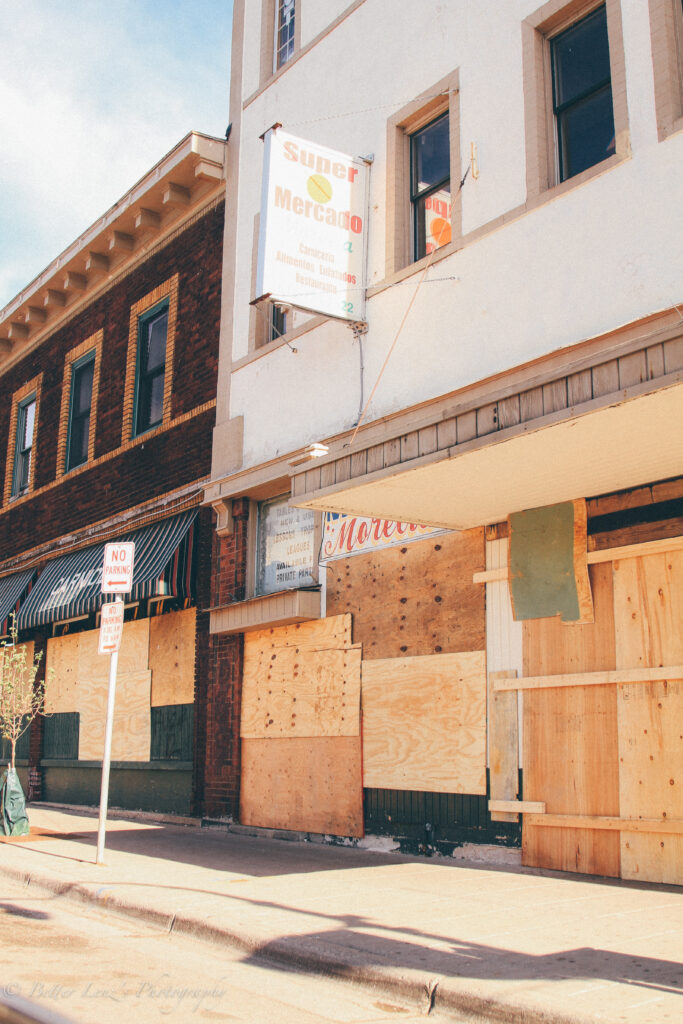
John Returning Home
When we think about the word “soldier,” we associate the label with someone putting their life on the line for battle or war. The American soldier is one that fights for America, but what about the Black soldier? Yes, we have Black American soldiers fighting for America, but what about fighting within it? This is where the term “soldier” for Black people shifts, because now we are not martyrs of a great nation, we are martyrs for our communities inside that great nation. This causes many changes to the perception of American acceptance of the Black body. In “Coming from Battle to Face a War: The Lynching of Black Soldiers in the World War I Era,”Vincent Mikkelsen explains this dichotomy surrounding the Black soldier. “The United States military had two major concerns regarding black soldiers as the war came to an end: first, the susceptibility of blacks, both in the military and at home, to subversive rhetoric and behavior; and secondly, the influence of favorable treatment by the French on black troops, and more specifically, by French women. Ironically, both of these concerns could have been erased if the military had simply reviewed their own policies.”2 It was after World War I that the idea of white fear became more apparent. It was feared that Black soldiers would return home and wage a war against white people as a tactic of revenge. It was not the confirmation of this race war, but the idea that it was possible—hence why 1919 saw the rise of the Ku Klux Klan and the Red Summer lynchings. You can understand John’s rage in Aftermath when telling Mam Sue and Millie that he has to avenge his father by killing those in the white mob.
“JOHN (his speech growing more impassioned and bitter) This ain’t no time fu’ preachers or prayers! You mean to tell me I mus’ let them w’ite devuls send me miles erway to suffer an’ be shot up fu’ the freedom of people I ain’t nevah seen, while they’re burnin’ an’ killin’ my folks here at home! To hell with ‘em!”3 John’s conflict with fighting for America in comparison to what America has provided for him post-war is significantly different. To recognize the pain of losing his father only over the price of cotton shows the misstep he took by becoming an American soldier. But it is at this moment we notice the change in the definition of soldier. Due to John’s realization of this neglect, he chooses to remove his honors from the World War and becomes a soldier for his own family.
This is where the surfacing of performative allyship occurs. The acknowledgement of white America’s misdeeds and guilt. Preparing Black soldiers for battle, when there is a war going on in our very neighborhoods. The juxtaposition of white America’s desires to fight through unity, with the neglect of their own history and people. It is astonishing to notice that once white America sees their faults, there is not a clear methodology toward reparations and repair, but instead, manipulation and fear.
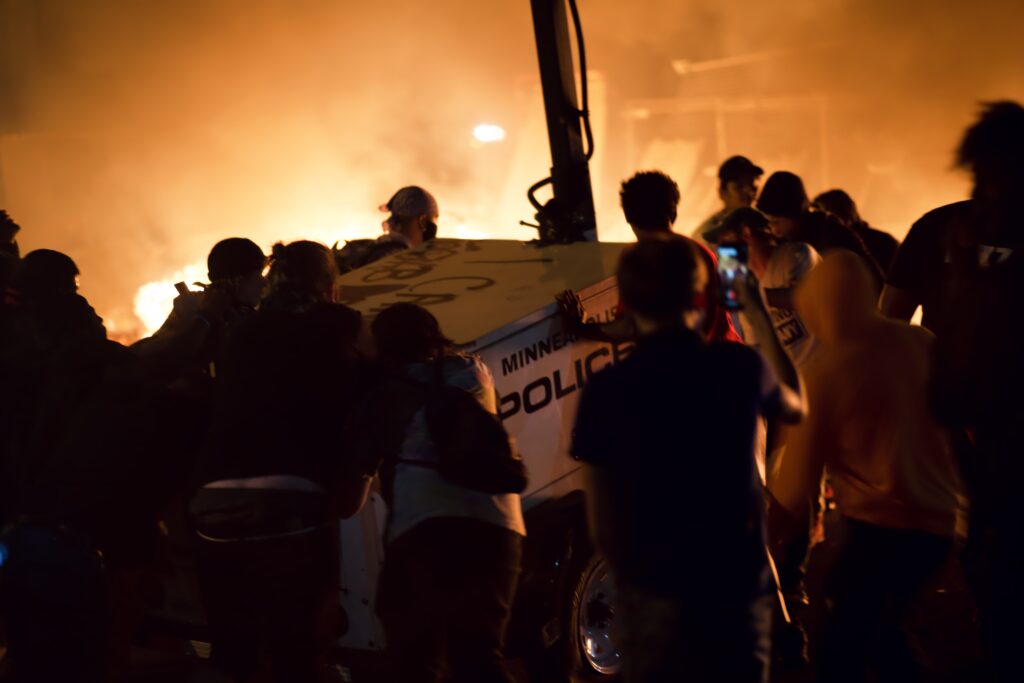
Continue the fight? Or go home?
On May 25th, 2020, George Floyd was murdered in South Minneapolis. In the pit of the pandemic and strict social distancing, we are on the streets again, marching and protesting for justice. This is a cyclical moment, which has occurred hundreds of times, across cities, in our generation. But it was not just Black people marching. Everyone else did as well, including the supposed “allyship” of white America. In fact, many changes occurred over the next months due to George Floyd’s passing. A square was created at the intersection of 38th and Chicago in his honor and that of others murdered in the hands of police; many organizations came together to motion defunding the police; policies were beginning to change; American-based companies shared commercials, flyers, postings in support of the injustice; and most importantly, Karens were increasingly getting exposed!
And then… silence.
Where did that support go as the summer wound down? As the cold began to come past the autumn equinox? The answer is: the fun diminished. White America was over it by the time real work truly could have begun. In addition, those same American companies brought in revenue from the saturation of Black Lives Matter on their websites, then quietly closed the “chapter” as though Black death does not help America’s freedom ring. White America played into it until it did not benefit them most, then skedaddled before the first flash-bang. But this was not an attempt to fulfill allyship for the Black community, it appears to have been merely a performance.
Carmen Morris stated that, “Performative allyship does not engage on a complex level. It consists of low level, often ill-informed rhetorical statements that are usually obvious to Black and Brown employees and real allies, of the antiracist, racially inclusive agenda. It lacks genuine concern and does little to acknowledge the very behaviors that support structural and process-driven racism.”4 Performative allyship is revealed mostly in the behavior shifts, when white America can sense the moment it is not they who are the most affected. At this moment, there is a choice: should we continue the fight or go home? By September of 2020, it was evident that most of white America chose to go home. However, Black pain is not temporary; it is consistent. Black trauma is not segmented; it may last until the final day. We are the Black soldiers of our movement. While many can disagree, it is not impossible to assume that Black people fight until the end, and oftentimes in the very environments we live and breathe in. When the day is over, the protest has calmed, and we all finally go home, the traumas stay with us. The videos remain accessible; we wake up again to the aches.
When John returns to his family, it seems he has done all he could to serve and protect his supposed country. But how can John come “home” to a country that serves his Black existence more battles? While we honor George Floyd by providing a square for community gatherings, how much of that is a constant reminder of the continuity of injustice and police brutality? This holds us in the container of pondering on solutions, alternatives for Black existence within the dystopic American nation.
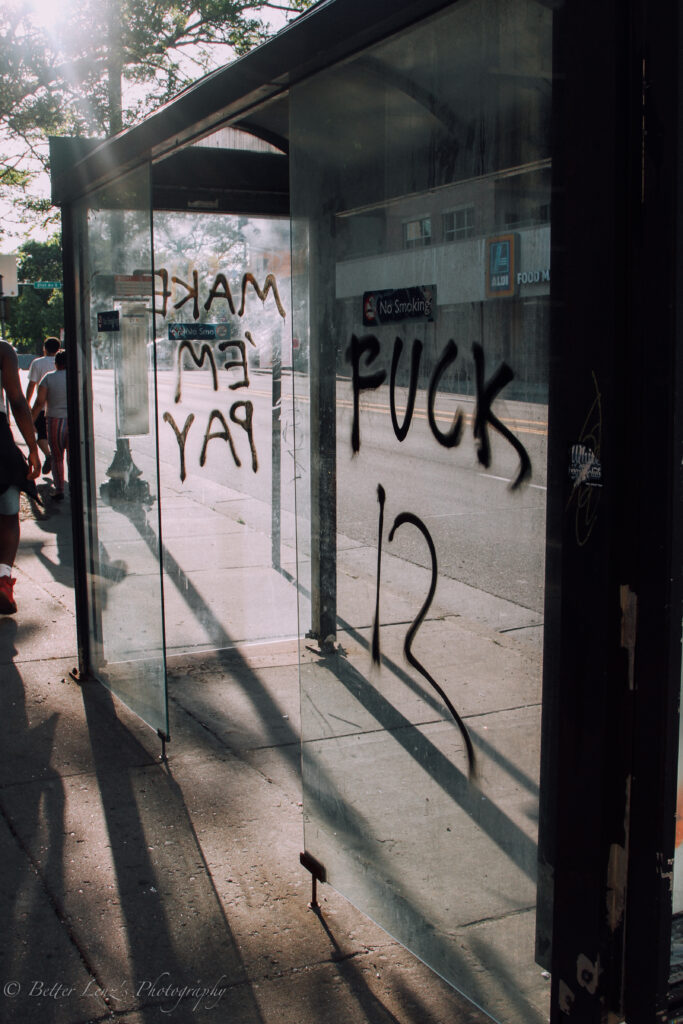
To Expand Black Excellence
While 1919 was a horrific year, especially for Black folk, it was also a moment of triumphant change and Black independence. Several hours north of Washington, DC, where Burrill grew up, was Harlem, NY. This community was in the beginning stages of what would become known as the Harlem Renaissance, a time of Black creativity, expression, and expansion. During this revolution of Black thought, we recognized the power we had in ourselves and how we could connect with our identity and purpose in this country. We saw our inner truths, displayed them through music, visual art, and activism, and explored what it meant to be Black beyond the constant struggle of overt racism and oppression.
In that same year, about a day trip southwest from Harlem, we could arrive at the Greenwood district, where Black Wall Street was thriving. In this city, they designed a map of Black excellence. Anything a Black person would need could be readily available from another fellow Black person in the neighborhood: doctors, business owners, teachers, technicians, healers, and more. This was a city centered on strong and progressive change, not just for our own cultivation, but to also challenge the consistent patterns of economic exploitation, white fragility, and powers that kept us in the mud. We worked together as soldiers protecting our own community, while constantly pushing the envelope to our greater calling. 1919 was a transformative year despite the racism that constantly existed. We fought through it as a community and kept the value of our abilities alive. The idea of performative allyship did not apply because we provided our own ways of uplifting and supporting one another. So does this exist for us in 2021? I believe the following concepts have helped me see the possibilities of change for Black folk, to the extent that it questions the necessity of white allyship to begin with:
- Reclamation
The idea of George Floyd Square existing on 38th and Chicago feels unprecedented. It is 2021 and the square still stands today. The moment we reclaim space is the moment we see our freedoms given back to us. While George Floyd Square isn’t the only time this has happened in Minneapolis (for example, Bde Maka Ska returning to its Dakota name), it allows us to reexamine the community around us and seek to find ways to protect each other without the needs of law enforcement.
- Withdrawing
It is hard to withdraw from capitalism and the intricate workings of American society. As a theatermaker, it is even more difficult to withdraw from American theater, if I also want my work to see the light of day. But sometimes withdrawing starts in small ways. Good examples could include the stores we buy our food from, riding a bike or walking as an alternative to bus or car, the clothes we buy. Some of these investments could be taken from larger corporations and fed back into Black businesses that seek to better our economic advancement, if possible.
- Create equity and opportunity
To level the playing field for Black folk who cannot afford investing as much as they would like into Black businesses, how can Black leaders in power filter funds toward events or organizations that can give affordable, if not free, resources to those who have difficulty buying products created by us? For example, would it be possible to jumpstart our own supermarket, which was funded completely by Black business owners and community?
- Define our own “serve and protect”
The push to defund MPD was one seed of many to be planted, towards the goal of finding our own means of protection for our community. When we realize that our community is attacked by the very uniforms that are supposed to protect us, we have a yearning to find actual protectors, or even to be the protectors ourselves. As we take funds from the police and put them into our community, this is the perfect moment to restructure our own ways of building protection. This might include hiring Black militias, opening self-defense classes, creating education courses on violence and safety, and utilizing community tools to watch over our neighborhoods. These resources are already available and happening, but how we expand is the bigger task.
- Expression
Art is one of the most connecting and uplifting ways to address and heal from side effects of oppression. While entertainment is something we all enjoy, it is equally satisfying to know a piece of work can be used as a form of civil discourse and education. Augusto Boal once said, “The theater itself is not revolutionary: it is a rehearsal for the revolution.” While the act of theater itself doesn’t do the physical work of change, it can be a space to provide nuances of perspective. Other art forms can do this work as well.
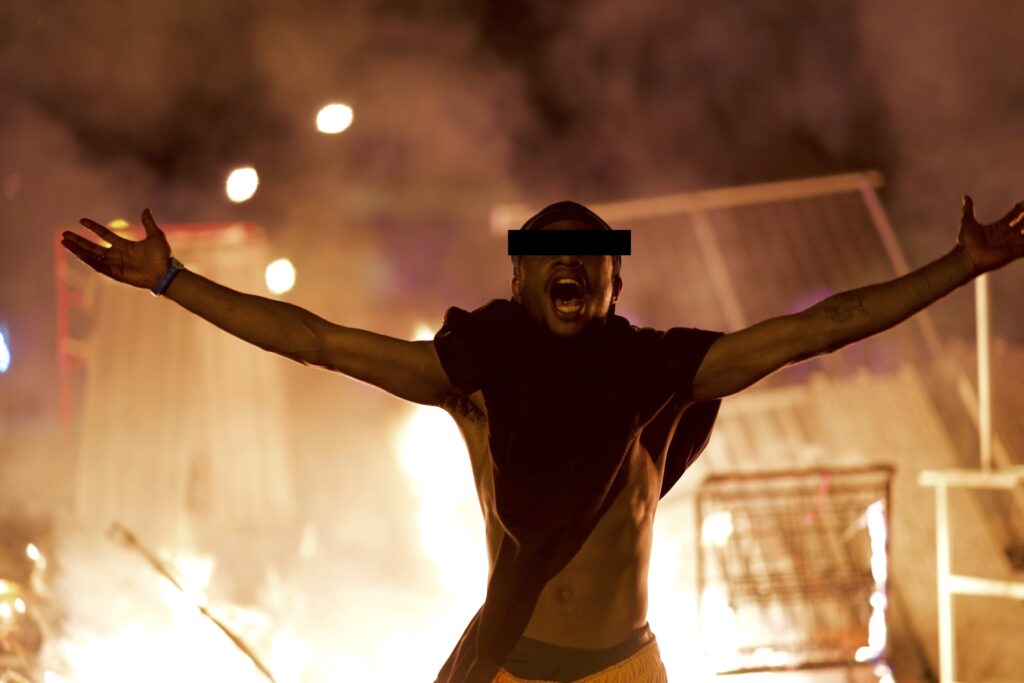
Yearning
America strives to be seen as a utopian country that welcomes all and can do all for anyone. But history shows that this is usually not the case. Unless someone is a white, cis, able-bodied male, one is often neglected in some way. In addition, the darker the skin tone, the easier it is to be targeted and criminalized. In a class not too long ago, a professor of mine asked his students this question: is America’s value system rooted in anti-Blackness? While there may not be concrete answers of that initial emergence, we are certain that America’s actions to provide a welcoming society to Black people have not been as pristine. In addition, what has been deemed as sincere allyship has been glossed over by white fragility and has become a performance, using Black suffering as the stage.
When I passed by my old neighborhood on the 724, I saw a different picture. I saw Black elders sitting on lawn chairs sharing a drink, and Black children riding bikes through the grass, smiling cheek-to-cheek. It was a cloudy day, but I felt the sun smiling too. It is these subtleties that make me see the possibility of it all. A sense of love and a place called home. Sadly, this is not always the case for Black folk all over the nation. At any moment, we could be suited up for battle again. But how can our neighborhoods transform into a comfortable home for us Black soldiers? It was tough to achieve in 1919, and there is still a yearning in 2021.
“A burning log falls apart, and Mam Sue suddenly stops singing and gazes intently at the fire. She speaks in deep mysterious tone to Millie, who has finished her task and has come to the hearth to put up her irons.”
Mary Burrill, “Aftermath”5